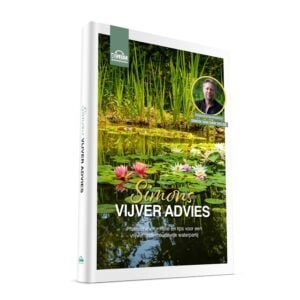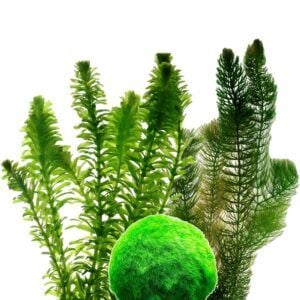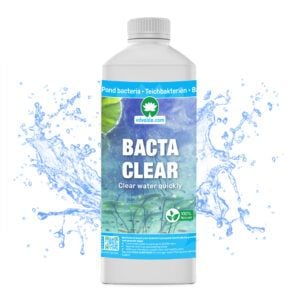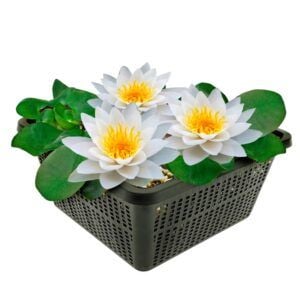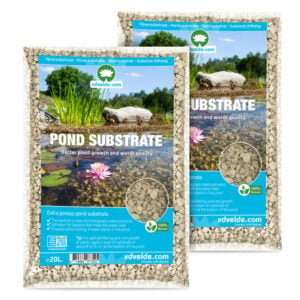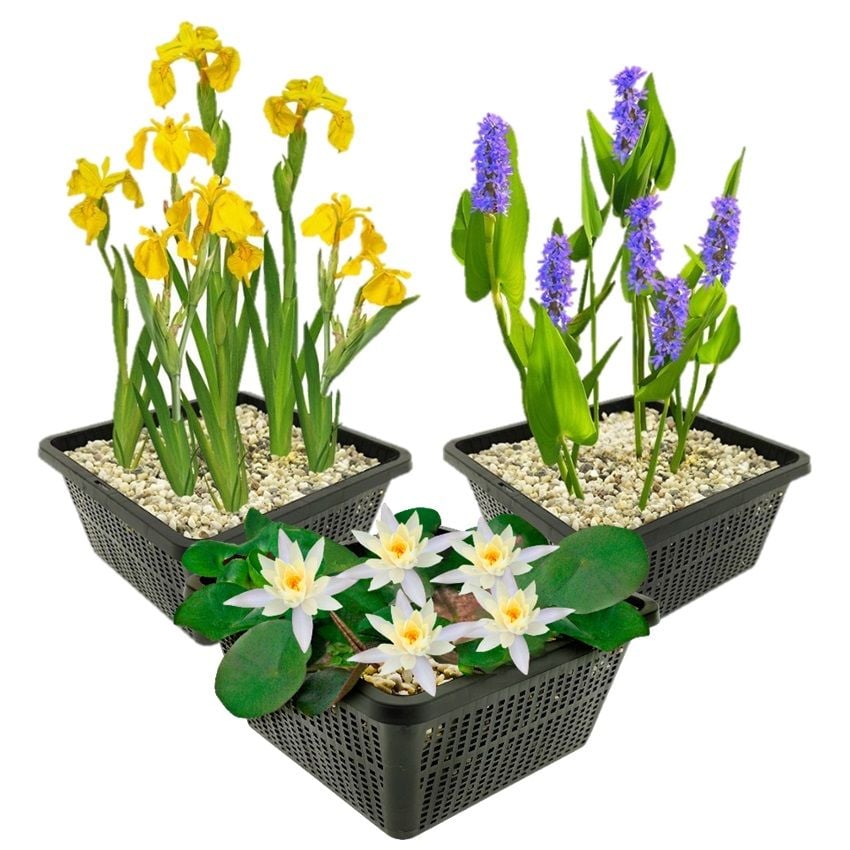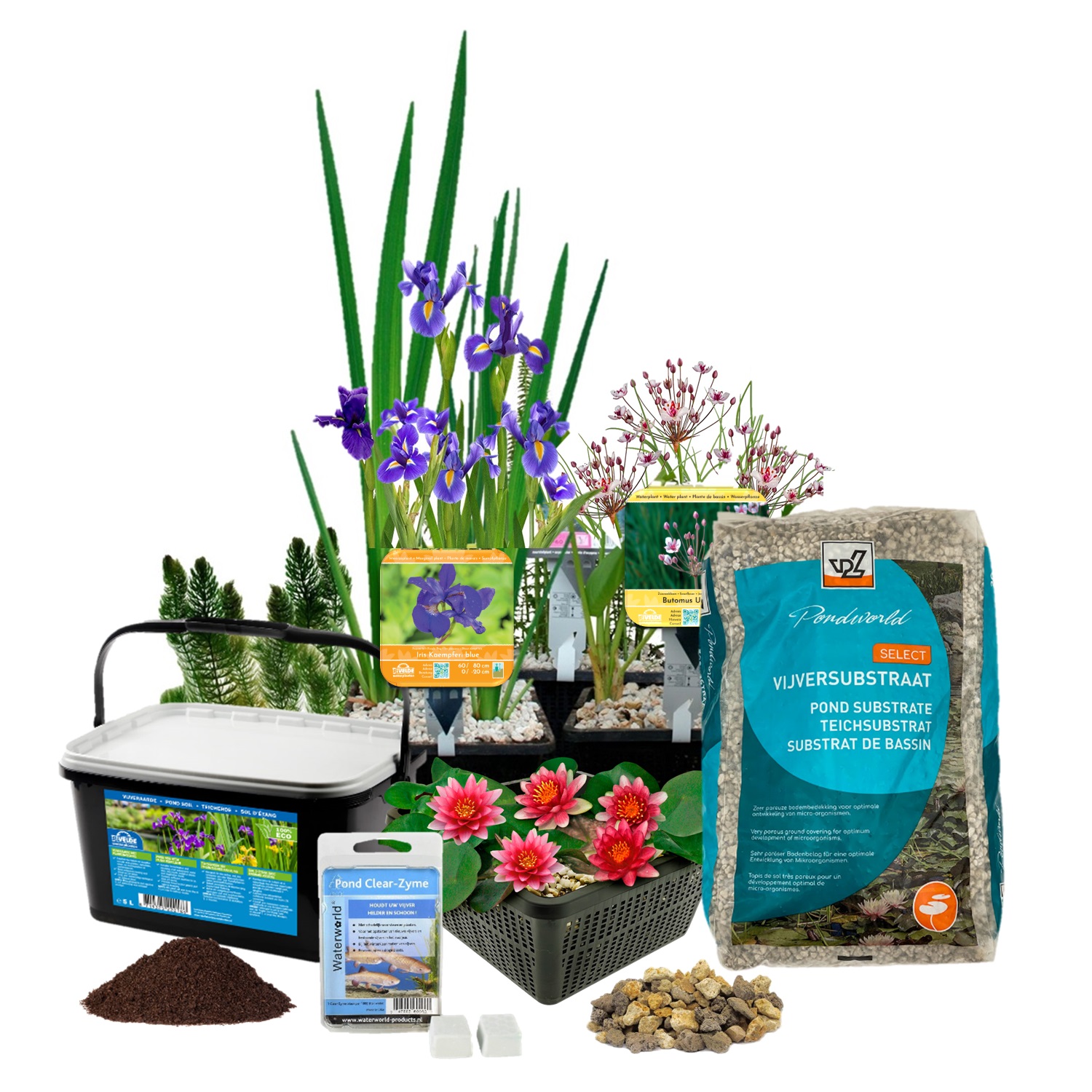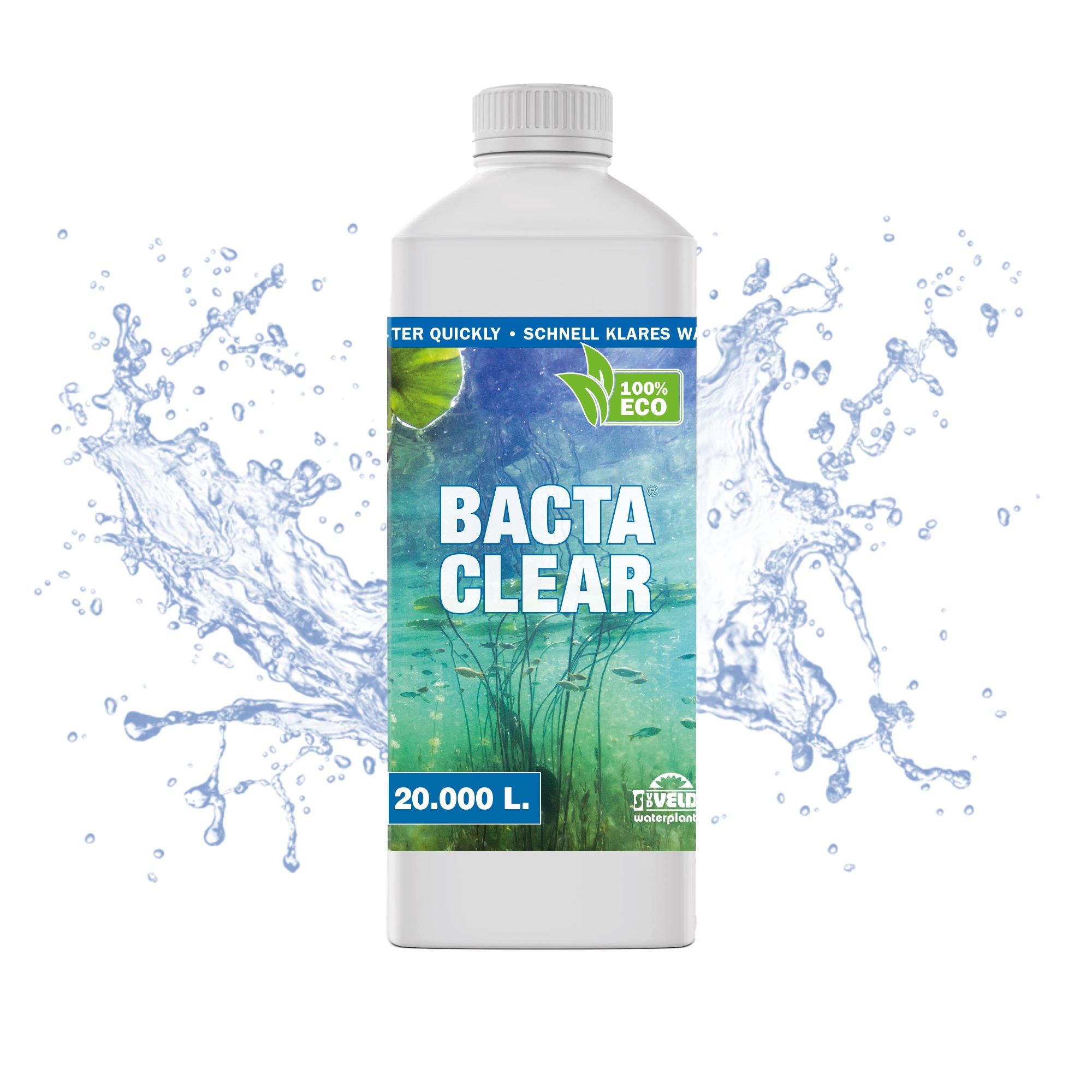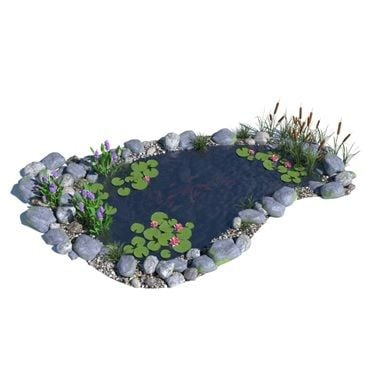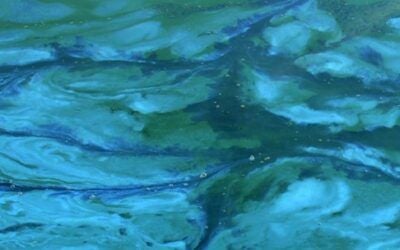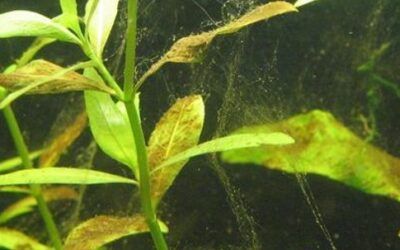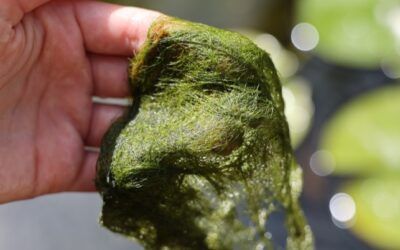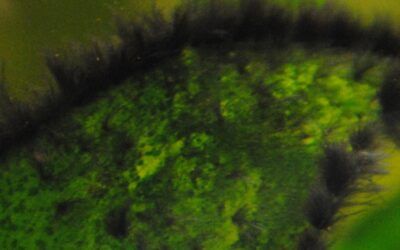
I hope you enjoy reading this blog.
Thread algae control and prevention in the pond
The sight of filamentous algae or other types of algae in your pond need not immediately set off alarm bells, as they need not cause any problems. However, if there are too many algae in the pond, they can be a major threat to the biological balance. In this blog we discuss the causes of filamentous algae, how to prevent and remove them, and which treatments are most effective.
What is filamentous algae?
Thread algae, also known as filamentous algae, is a type of algae found in ponds and other bodies of water. They are long, thin threads that stick together and form a dense layer. This can give an unsightly appearance to the pond and affect water quality. Excessive growth of filamentous and floating algae can reduce oxygen levels in the water, which can be dangerous to pond fish and other aquatic organisms in the pond. Fortunately, thread algae can be easily and quickly controlled and prevented by properly landscaping the pond.
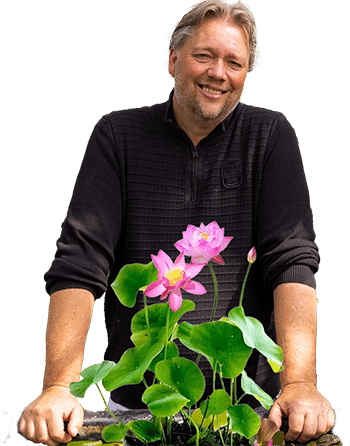
Tips, advice and substantial savings
What is the cause of filamentous algae?
Thread algae begin innocently as gossamer strands that attach to the pond edge, plants or rocks. Causes are:
- Insufficient oxygen plants: Thread algae and oxygen plants are food competitors. If there are not enough oxygen plants to absorb nutrients from the water, filamentous algae have a growth advantage.
- Low water hardness: Thread algae grow well in soft pond water, while oxygen plants do not.
- Leaf fall: Falling leaves that decay on the pond floor release nutrients that promote filamentous algae growth.
- Abundance of fish: Fish produce waste, which makes pond water more nutrient-rich and encourages the growth of filamentous algae.
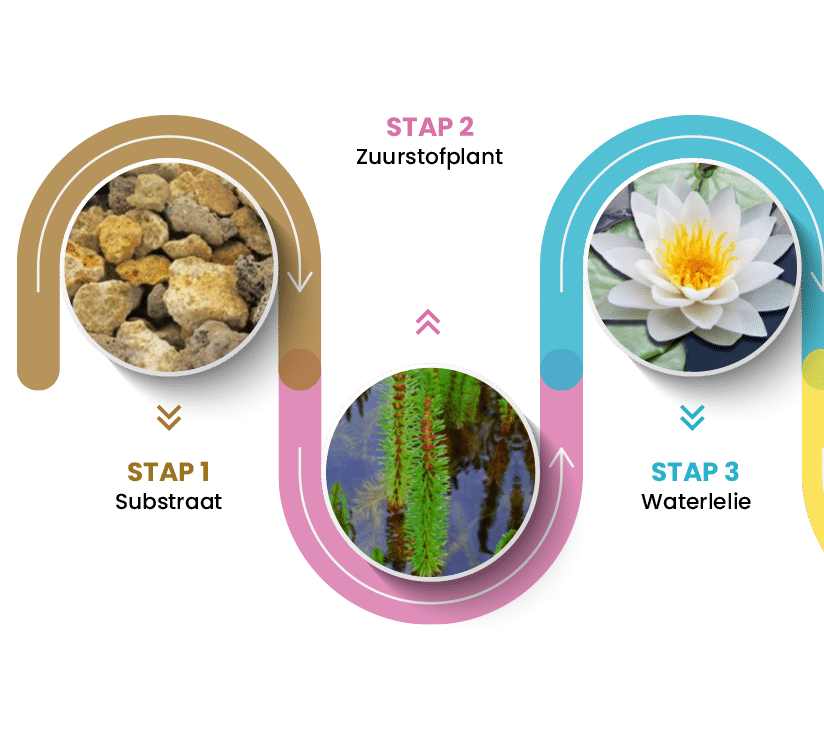
Want a naturally clear pond?
A beautiful pond is easier than you think.
Is filamentous algae good?
To a limited extent, filamentous algae can contribute to the pond ecosystem by consuming nutrients that might otherwise lead to an explosion of more harmful algae species. However, when they get the upper hand, they can interfere with other plants and disrupt the pond's biological balance.
How do you prevent filamentous algae?
- Provide enough oxygen plants: Place enough oxygen plants in the pond so that they can absorb nutrients from the water.
- Limit leaf fall: Span a net over the pond to prevent falling leaves.
- Limit the number of fish: Too many fish make the pond water more nutrient-rich.
- Remove filamentous algae by hand: This helps slow its growth.
- The ultimate answer to thread algae is a properly designed pond: A properly designed pond promotes a natural balance, with each plant and organism playing its part in creating a healthy environment. This balance keeps the water clear and prevents excessive growth of algae such as string algae.
Control of filamentous algae
The best weapon against thread algae is not a temporary solution, but is to set up the pond correctly from the beginning, below are some essential points that a correctly set up pond should meet:
- Pond substrate: A healthy pond bottom is crucial. A thick layer of pond substrate attracts beneficial bacteria that help purify the water and provides a stable base for plants.
- Oxygen plants: They purify the water, provide hiding places for fish and marine life, and help regulate temperature and algae growth.
- Water lilies: These beautiful plants provide shade, help regulate water temperature and provide hiding places for fish.
- Marsh and aquatic plants: These plants play a crucial role in water purification and algae control.
- Pond Bacteria: These microorganisms are your pond's unseen heroes, contributing to a clear and healthy ecosystem.
Tip: Freshwater mussels are also a great addition to a correctly designed pond, as they naturally purify pond water. One mussel purifies an average of 10 liters of water per hour.
Our step-by-step plan for a correctly set-up pond shows you step-by-step how to set up your pond correctly to prevent problems such as algae: Read our step-by-step plan.
Removing thread algae from the pond?
Is your pond already constructed and you are suffering from a filamentous algae infestation? Then try to restore the balance with good bacteria. These single-celled organisms ensure that string algae have less chance to grow. To combat filamentous algae with pond bacteria, use our in-house developed product: Bacta Clear. A product with a unique formula, consisting of two different strains of bacteria. When administering Bacta Clear, the bacteria attach themselves to the pond substrate. The enzymes secreted by the bacteria filter the water. In this way, the water in the pond returns to balance and the filamentous algae no longer have a chance to grow. By the way, most ponds are filled with tap water. Unfortunately, this does not succeed in controlling and removing string algae, because tap water contains a lot of lime and lacks the right bacteria.
Thread algae koi pond
Likewise, filamentous algae can occur in a koi pond. This is a deep pond built specifically for koi carp, in which they can overwinter well. One solution may be to feed the pond fish less, which prevents uneaten or undigested food from becoming a food source for the algae. In addition, you are more likely to have the koi carp eat the filamentous algae. A second good solution is additional planting of aquatic plants. This would specifically involve plants that filter well and add oxygen to the water. Simon's best choice of plants are the Lis, Lisdodde, Pikeweed and Japanese cave pipe. Controlling thread algae in the koi pond is not done with one plant. Feel free to place several aquatic plants in the pond. They will grow back on their own when the koi carp have eaten from them.
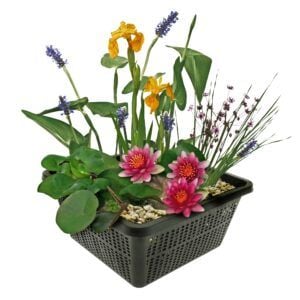

Simon van der Velde
Pond specialist and aquatic plant grower since 1986

Want to receive the best pond tips all year long, complete with exclusive promotions?
Simons Pond Advice Book
- Choose your language of the book
- Complete pond handbook
- 100+ pages from construction to maintenance
Loose Oxygen Plants Set
- For 500 - 1,000 liters of water
- 16 plants
- Placement: loose in the water
BACTA CLEAR
- Pond bacteria for 1,000 to 20,000 L
- 100% eco: clear water fast
- Safe for humans, plants & animals
White Water Lily - Nymphaea Albatross
- Large water lily
- Full-grown height: 10 cm
- Placement: -10 to -100 cm
Complete Pond Package - Small - Red
- For 100 - 500 L
- 19 plants + extras
- Placement: -1 to -100 cm
Pond substrate - 40 liters
- 40 L covers 1 m² ↥ 10 cm
- Heavy duty quality for the best filtration
- Extra porous: optimal plant growth
Mini Water Lily - Red - Nymphaea Pygmaea Rubra
- Small water lily
- Full-grown height: 5 cm
- Placement: -10 to -40 cm
Complete Pond Package - Medium
- For 500 - 1.500 L
- 36 plants + extras
- Placement: -1 to -100 cm
Plant Filter Package - Medium
- For 3 - 4 m²
- 64 plants
- Placement: -1 to -80 cm


